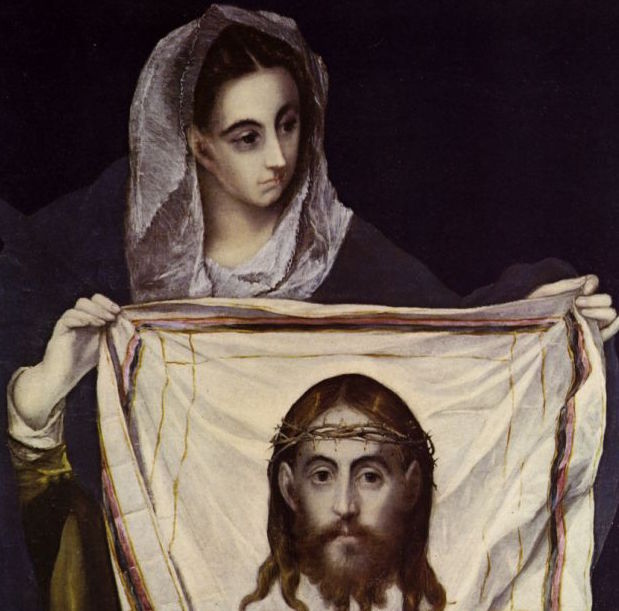Ernst Hemingway (Death In The Afternoon) explained the meaning and origin of the word “Verónica” in bullfighting context:
“When the bull came out did you notice that one of the banderilleros ran across his course trailing a cape and that the bull followed the cape driving at it with one horn? They run him that way always, at the start, to see which horn he favors. The matador, standing behind his shelter, watches the bull run by the trailing cape and notices whether he follows the zig-zag-ging cape on both his right and his left sides, this showing whether he sees with both eyes and which horn he prefers to hook with. He also notices whether he runs straight or if he has a tendency to cut ground toward the man as he charges. The man who went out with the cape in both hands after the bull had been run, and cited him from in front, standing still as the bull charged, and with his arms moving the cape slowly just ahead of the bull’s horns, passing the bull’s horns close by his body with a slow movement of the cape, seeming to keep him controlled, in the folds of the cape, bringing him past his body each time as he turned and recharged; doing this five times and then finishing off with a swirl of the cape that turned the man’s back on the bull and, by cutting the bull’s charge brusquely, fixed him to the spot; that man was the matador and the slow passes that he made were called veronicas and the half pass at the end a media-veronica. Those passes were designed to show the matador’s skill and art with the cape, his domination of the bull and also to fix the bull in a certain spot before the entry of the horses. They are called veronicas after St. Veronica who wiped the face of Our Lord with a cloth and are so called because the saint is always represented holding the cloth by the two corners in the position the bullfighter holds the cape for the start of the veronica. The media-veronica that stops the bull at the end of the passes is a recorte. A recorte is any pass with the cape that, by causing the bull to try to turn in less than his own length, stops him brusquely or checks his rush by cutting his course and doubling him on himself.”
Santa Verónica con Santa Faz by El Greco. Museo de Santa Cruz, Toledo.
Meaning and origin of the word Veronica in the context of bullfighting
Responder
